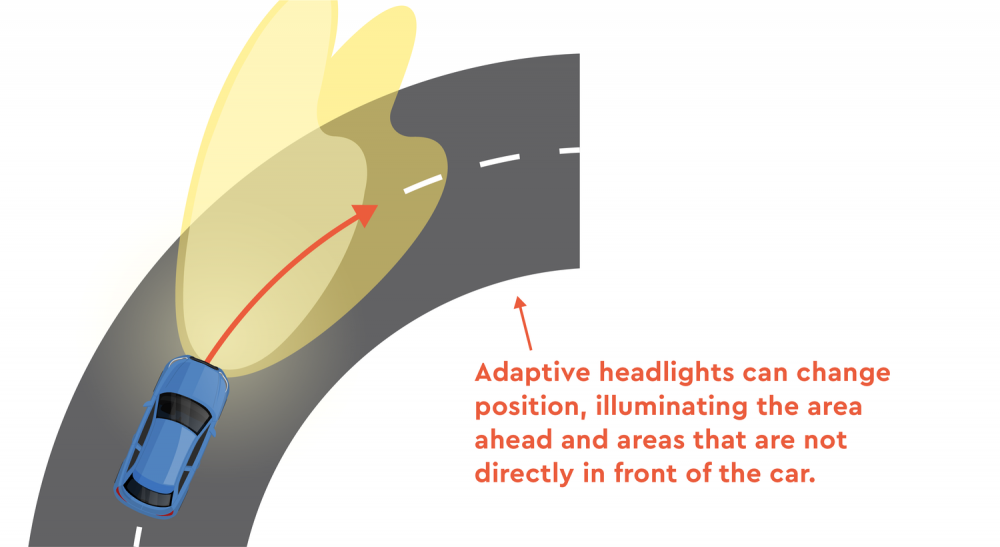Adaptive Headlights
What are adaptive headlights?
Adaptive headlights are an active safety feature designed to increase safety when driving at night. With regular headlights, they shine straight ahead, but adaptive headlights can change position, illuminating the area ahead and areas that are not directly in front of the car.

What do adaptive headlights do?
Adaptive headlights illuminate the road ahead and adapt to the different conditions in the night. If you are driving down winding roads at night, adaptive headlights are invaluable. It can save lives in potentially dangerous situations, such as:
- An animal suddenly running into the road.
- An oncoming vehicle drifting into your lane.
- A narrow road on top of a hill, when you are unable to see over the hill.
- A curved road.
How do adaptive headlights work?
Adaptive headlights are made up of subcomponents, including:
Wheel speed sensors – monitors the wheel rotation speed.
- Wheel speed sensors – monitors the wheel rotation speed.
- A yaw sensor – tracks a vehicle’s movement.
- Steering input sensor – monitors the angle of the steering wheel.
- Headlight motors.
The data from all of these sensors is monitored to move the headlights in different environments. How much the headlights change position will depend on the type of adaptive headlights you have. Some headlights can move up to 15 degrees to the right and left.